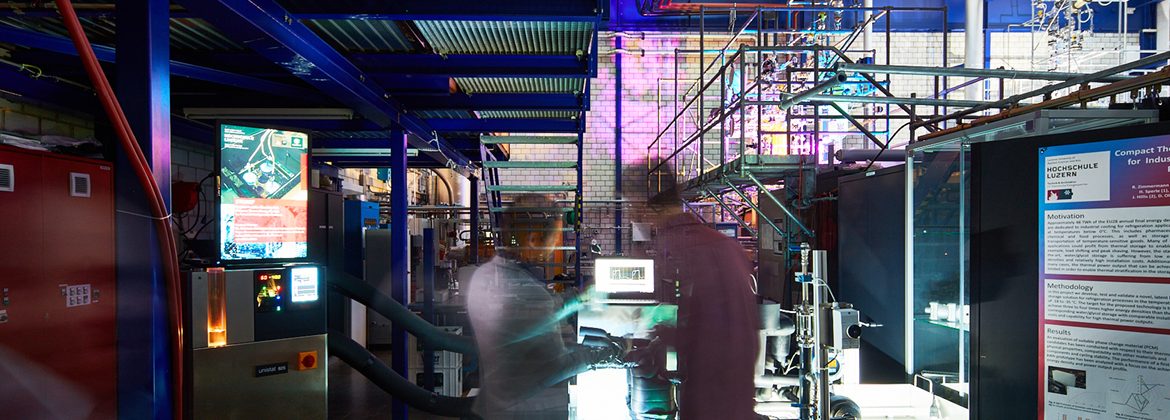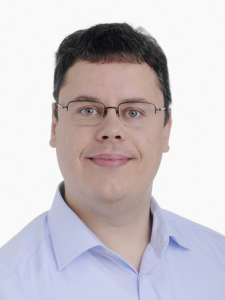
- By MiniStor
- No Comments
Interview with Philipp Schütz from HSLU

1. What is the role of HSLU in MiniStor?
We are one of 18 partners of this project and are mainly responsible for the development of the phase change material storage, the balance of plant as well as the analysis of the overall-system performance based on real-world monitoring data. Similar to the geographical position of Switzerland in the centre of Europe, our role also involves also supporting the flow of information among the different partners working on different challenges in different countries. To enable this information flow, HSLU also participates in the development of the thermochemical storage, the overall control system as well as support the integration of the system on the demonstration sites. All in all, a very interesting mix of challenging engineering tasks, project organisation and hands-on experiences that require quick decisions on how to solve problems to enable project success.
2. What impact will MiniStor have on Switzerland?
Switzerland is working hard to reach the challenging goals of the energy strategy 2050. The potential for renewable energy is far from being exploited. Therefore, technologies to store renewable energy (e.g., from solar sources) are vital to increase the share of renewable energy exploited. Scarce spatial resources combined with high costs for renting living space cause a thrive for compact storage technologies. MiniStor with the aim to build a (thermal) energy storage system with a storage density 10 times higher than water are therefore very important because they address both challenges – higher share of renewable energy and smaller space requirements for the storage system.
3. How important are EU projects for Swiss universities of applied sciences?
For a Swiss university of applied science, EU projects are very important for three reasons:
- Impact: these projects are the framework for a long-term collaboration with European research partners working on the same challenge and combining the expertise of a large network to solve a pan-European problem.
- Challenging questions: EU projects such as MiniStor address challenging (technological) questions and therefore enable the development of novel methods to solve solutions to practical problems.
- Teaching the next generation of engineers: With these projects our students and junior researchers have the unique opportunity to work in a large international research project with many partners with different backgrounds on very challenging engineering problems.
4. What do Swiss partners in general contribute to EU projects?
To answer this question for a generic Swiss partner is very difficult. Companies and universities working in different sectors from pharmaceutical science to heavy machining industry as well as from 3D printing technologies to energy science are participating in European research projects. Analysing the projects, I am aware of, I perceive a light trend: High personnel costs are often responsible that Swiss partner are focusing on highly specialised tasks or providers of high-sophisticated technologies. On the other hand, demonstrators for a technology that require substantial hardware installations and engineering are often built outside Switzerland to evade high hardware and personnel costs.
5. Where are the challenges and how are they mastered?
The cost factor combined with the role as contributor of high-sophisticated technologies is often responsible that Swiss partners may contribute essential parts of the projects’ solution. In conclusion, Swiss partners must meet high expectations, provide their input on time and negotiate with partners from different countries. Luckily enough, this diplomatic role combined with accurate work on time is part of the reputation Switzerland acquired in the last decades and a strong part of our education.
6. Last but not least, what is it like to be the head of a group involved in EU projects?
It is certainly both very rewarding, but also challenging. I am very proud to be together with my team part of such an interesting project that could have a big impact on the European and Swiss energy industry. In addition, it is a very rewarding to be part of such a large consortium and being able to work on a common topic with researchers from all over Europe. On the other hand, different working styles and previous experiences have to be coordinated to ensure that we can meet our targets set high. In conclusion, this project is not only technically and scientifically, but also personally very interesting. I feel very honoured to be given this opportunity to work with these researchers on this very interesting project.